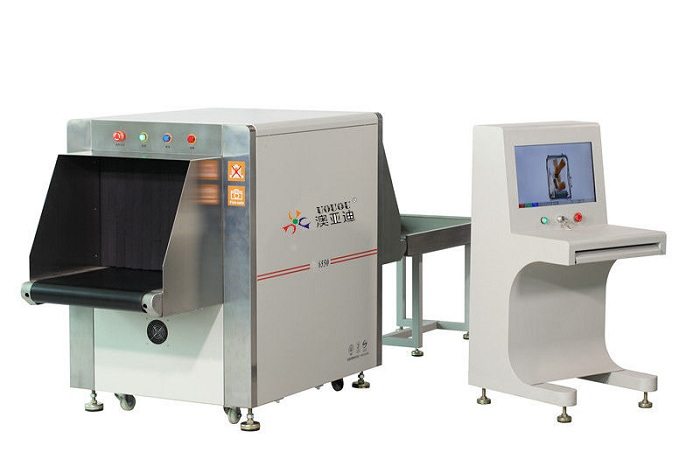Africa has in the recent years witnessed increasing cases of terrorism heightening the need to enhance security at all entry points. This has meant staying at par with the latest trends in security and scanners play a key role at checkpoints which need safe and effective personnel screening systems, whether they are used for airports, malls, asset protection, courthouses, correctional institutions, border crossings, commercial offices or manufacturing facilities.
Security Scanners come in all shapes and sizes to meet the needs of a client ranging from handheld scanners to mantrap cubicles, we take a few of some of these options that are becoming essential aspects of any buildings fittings.
Hand-Held metal detectors
Handheld metal detectors are portable light weight devices and can be carried in the hand comfortably. They are mainly used at check-points to detect metal targets in items that people may be carrying such as handbags or even pockets of various clothing. They are readily available and highly used in many of the buildings in commercial centers by security personnel as the first line of defense.
Walk-through metal detectors
Walk-through or portal detectors are common in public buildings, airports and military installations in most African countries. Their portals are bracketed with two large coils or loop-type antennae, one a source and the other a detector. Electromagnetic waves are emitted by the source coil into the detection space. When the electromagnetic field of the transmitted wave impinges on a conducting object, it induces transient currents on the surface of the object; these currents, in turn, radiate electromagnetic waves. These secondary waves are sensed by the detector coil.
Magnetic imaging portals
The magnetic imaging portal is a relatively new technology in Africa. Like walk-through metal detectors, it illuminates its detection space with radio-frequency electromagnetic waves. However, it does so using a number of small antennas arranged ring-like around its portal, pointing inward. Each of these antennas transmits in turn to the antennas on the far side of the array; each antenna acts as a receiver whenever it is not transmitting. A complete scan of the detection space can take place in the time it takes a person to walk through the portal. Using computational techniques adapted from computed axial tomography (CAT) scanning, a crude image of the person (or other object) inside the portal is calculated and displayed. The magnetic imaging portal may for some purposes be classed as a metal detector rather than as an imaging system because it does not produce a detailed image of the metal object detected, but only reveals its location and approximate size.
Man-trap cubicles
A man trap, or a security booth, is a security device that monitors and controls two interlocking doors. Many banks are fitted with these devices. Interlocking doors are doors that can never be open simultaneously. Either one of the doors can be unlocked and opened, as long as the other door is locked and closed. Between these interlocking doors is a small, secure space, which only admits one person at a time. These access control booths effectively separate a non-secured area from a secured area. Man traps are ideal in high value or critical security areas, like cash handling depots, sensitive data processing areas, security control rooms, critical research labs, jewelry stores and vaults.
Full Body Scanner
A full body scanner is used to reveal objects, including explosives and weapons that could be hidden under clothing. The technology, widely used in airports around Africa, is safe and effective and provides an alternative between full body scanning and a physical search in case selected for additional screening.
Backscatter
Backscatter radiation is the radiation that is reflected (scattered) from a material back towards the X-ray radiation source. X-ray security units using backscatter radiation operate by exposing the subject to low energy X-radiation. This low energy radiation passes through clothing but is readily scattered by dense objects. Some of the radiation is scattered back into a series of radiation detectors, and creates an image of the subject’s body, showing any items concealed under the clothing.
The person stands in front of the enclosure and is scanned by the X-ray beam, which has a typical cross-sectional area of approx. 25 mm2. Usually the person is scanned twice, once from the front and then from the back.
Transmission
Transmission radiation is the radiation that passes directly through the person being examined. This radiation can be measured by a detection system placed on the side of the person opposite to the X-ray source. Transmission X-ray security units use significantly higher X-ray energies than backscatter units to create a radiographic image of the subject. The image is similar to those used for medical purposes and shows the skeletal structure of the subject, on which can be seen any contraband items, with sufficient X-ray absorption contrast, which the subject has swallowed as well as any weapons hidden on the body beneath the clothing. The person stands between the X-ray tube and the detector array and is scanned by an X-ray beam having a typical width of approx. 2 mm. The limiting quantity for the spatial resolution is the size of the detector elements.
In Africa as the battle to keep hostile intruders out, the need for security will continue to see more developments in the future with the needs being unobtrusivness, convenience and reliability.
